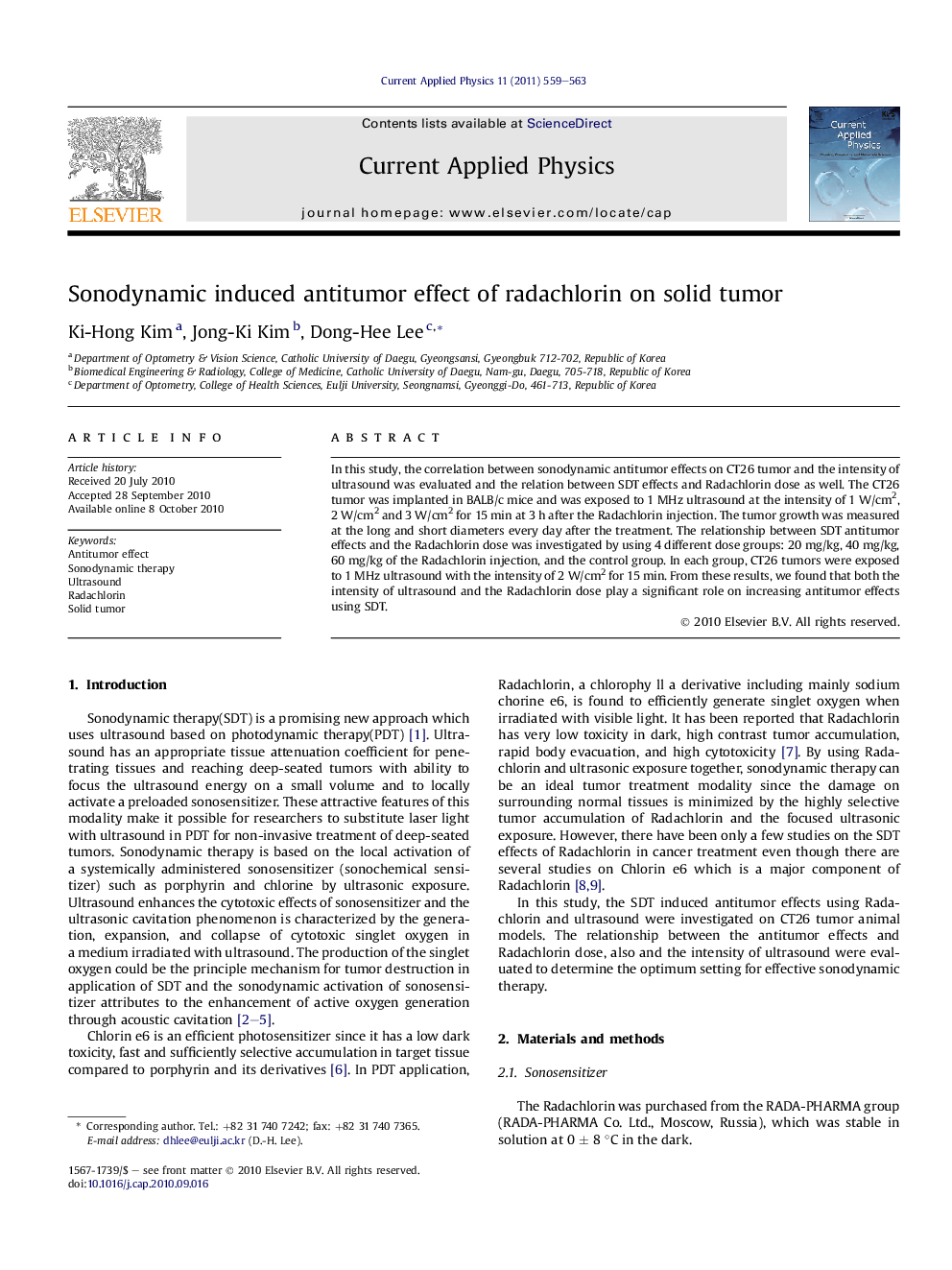| Article ID | Journal | Published Year | Pages | File Type |
|---|---|---|---|---|
| 1787796 | Current Applied Physics | 2011 | 5 Pages |
In this study, the correlation between sonodynamic antitumor effects on CT26 tumor and the intensity of ultrasound was evaluated and the relation between SDT effects and Radachlorin dose as well. The CT26 tumor was implanted in BALB/c mice and was exposed to 1 MHz ultrasound at the intensity of 1 W/cm2, 2 W/cm2 and 3 W/cm2 for 15 min at 3 h after the Radachlorin injection. The tumor growth was measured at the long and short diameters every day after the treatment. The relationship between SDT antitumor effects and the Radachlorin dose was investigated by using 4 different dose groups: 20 mg/kg, 40 mg/kg, 60 mg/kg of the Radachlorin injection, and the control group. In each group, CT26 tumors were exposed to 1 MHz ultrasound with the intensity of 2 W/cm2 for 15 min. From these results, we found that both the intensity of ultrasound and the Radachlorin dose play a significant role on increasing antitumor effects using SDT.
